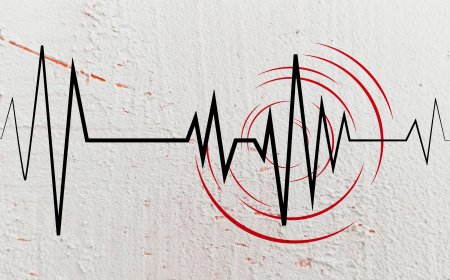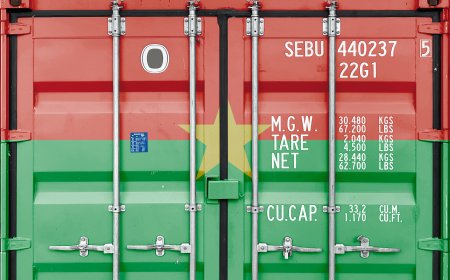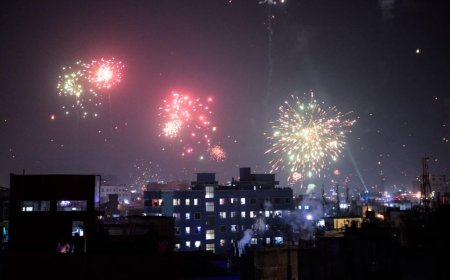Building Bangladesh’s Next Multi-Billion-Dollar Export Industry
The global shortage is real. The demand is guaranteed. The opportunity is enormous.

If you asked a soulless accountant what Bangladesh should export in the 21st century, they wouldn’t say T-shirts. They wouldn’t say shrimp, leather, or even software.
They would say nurses.
One trained Bangladeshi nurse with a foreign license will generate more income for her family -- and for this economy -- than a container of garments crawling out of Chitagong port.
The Philippines figured this out decades ago. We, meanwhile, are still stuck debating whether nursing is “respectable” while the world quietly runs short of millions of nurses. This is not the time for hesitation.
This is the time for Bangladesh to think like a serious state and build the one export industry we can scale faster than any manufacturing sector:
A human-capital engine powered by nurses.
The Global Nursing Crisis
Let us strip away diplomatic politeness. The global nursing workforce isn’t strained -- it is collapsing.
• United States: Facing a shortage of over one million nurses.
• United Kingdom: More than 100,000 NHS vacancies, many permanent.
• Canada: A deficit projected at 117,000 nurses by 2031.
• Australia & New Zealand: Chronic shortages in aged care and rural health.
• Japan & Europe: Demographic freefall with no replacement workforce.
• GCC: Structural dependence on foreign nurses for decades.
The world will be short 7 million nurses by 2035.
That is not a market.
That is a global emergency.
The Filipino Benchmark
While we watched from the sidelines, the Philippines built one of the world’s most successful human-capital export engines.
• Roughly 300,000 Filipino nurses work abroad.
• Their combined annual earnings are a minimum of US$15 billion and by some estimates are as much as US$30 billion.
One profession. 30 billion dollars a year.
That’s not a “sector. ”That’s sovereignty in the age of skills. They achieved this through design, not luck, by scaling nursing programs, embedding English proficiency, aligning curricula to global standards, and treating nursing as a respected pathway to the global middle class.
Bangladesh has the population, the youth, the ambition -- and none of the architecture.
It isn’t fate. It’s policy failure.
Bangladesh: A Young Nation with No Ladder Up
We love to brag about our demographic dividend:
170 million people, median age in the 20s. But what is this dividend doing?
Right now, our labour export engine is built on:
• Low-skill work
• Low earnings
• High vulnerability
• Unsteady remittances.
We then sit in talk shows and wonder why our foreign exchange position is fragile. A serious country would pivot to high-skill exports.
Nursing is the cleanest, fastest, most logical pivot:
• It’s women-led
• It’s respected globally
• It pays in hard currency
• And it will remain in demand for the next 30-40 years
Yet our current nursing system is:
• Under-resourced
• Poorly coordinated
• Not export-oriented
• Culturally undervalued
We claim we want a “skilled economy,” but we refuse to build the one skilled-export pipeline the world is begging for. That isn’t just a missed opportunity. It’s economic malpractice.
The Hospital Bottleneck: The Reality We Must Not Ignore
Before designing anything, we must acknowledge the elephant in the room:
Bangladesh doesn’t have enough hospitals for its own citizens -- let alone thousands of new nursing students.
Our hospitals are:
• Overcrowded
• Understaffed
• Overstretched
• Unable to absorb a massive training load
This is not a small problem.But it is not an excuse either. It is the reason we must design smarter -- not postpone the plan.
The future of nursing training cannot rely solely on hospital wards. It must rely on decentralization, modern simulation labs, and regional distribution.
The shortage of hospitals isn’t the obstacle, it is the design constraint that tells us how to build a scalable solution.
The District-Level Solution
Bangladesh cannot build a global nursing export industry from Dhaka alone. We must think industrially.
The Model: Micro Nusing Campuses
Every one of our 64 districts can host a micro-campus training 200-300 students per year, equipped with:
• A skills lab
• A simulation room
• A digital testing room
• A language lab
• District hospital partnership for rotations
This does four things:
1. Unlocks rural talent
2. Reduces Dhaka’s burden
3. Circumvents hospital capacity limits
4. Builds a national human-capital grid
This is not a college. This is a distributed export factory system.
Smart Specialization: Each District Trains for a Specific Country
Bangladesh must stop producing “generic” nurses. The world wants destination-ready nurses.
Each district micro-campus should specialise in one or two tracks:
• Sylhet: UK NHS Track
• Chittagong: GCC Track
• Jessore/Rangpur: Japan Track (elder care)
• Rajshahi: Germany Track (B1/B2)
• Khulna: Australia/New Zealand Track
• Dhaka/Narayanganj: USA/Canada Track
So a Sylhet student knows: I am UK-bound.
A Rajshahi student knows: I am Germany-bound.
A Jessore student knows: I am preparing for Japan.
This alignment eliminates inefficiency, reduces exam failures, and increases employer trust.
Scaling Up: Micro → Regional → National
Phase 1 (Years 1–3): 20-25 Pilot District Micro Campuses
Focus on UK, GCC, Japan.
Phase 2 (Years 3–7): 7 Regional Mega-Campuses
Each producing 1,000–2,000 nurses annually.
Phase 3 (Years 7–15): National Nursing Universities
10,000+ graduates per campus, with:
• NCLEX
• OSCE
• ANMAC
• AHPRA
• EU-ready specializations
This is how Bangladesh becomes a serious exporter, not an occasional participant.
Export Targets
By Year 5: 5,000 Nurses Abroad
• UK: 2,000
• GCC: 1,500
• Japan: 800
• Germany: 400
• Canada/Australia/NZ: 200
• United States: 500
By Year 7: 10,000 Nurses Abroad
Scaled proportionately in all destinations, with the US rising to 1,000+ annually. These numbers are modest next to the Filipino 300,000, but they prove Bangladesh’s credibility.
The Economic Upside
Here we are talking about registered nurses (RNs) -- fully licensed, exam-passing professionals, not low-tier aides. If Bangladesh focuses on exporting RNs to a mix of OECD and GCC destinations, a realistic blended average annual income per nurse is around US$55,000.
Let’s stay conservative and use that:
• 10,000 RNs abroad
• 10,000 × US$55,000 = US$550 million in annual global earnings
• If they remit 25–30% → US$137.5–165 million per year back to Bangladesh
• 50,000 RNs abroad
• 50,000 × US$55,000 = US$2.75 billion in annual global earnings
• Remitted → roughly US$687.5–825 million per year
• 100,000 RNs abroad
• 100,000 × US$55,000 = US$5.5 billion in annual global earnings
• Remitted → around US$1.4–1.65 billion per year
And this is without counting caregivers, elder-care assistants, and support staff. Around this RN core, Bangladesh can also export a supplementary layer of caregivers and assistant nurses to Japan, Germany, and the Gulf.
Their individual incomes are lower, but collectively they can push the ecosystem well beyond US$6-7 billion in combined global earnings over time.
This becomes a multi-billion-dollar national export sector, led by women, backed by skills, and powered by a global shortage.
The Window Is Open -- But Not Forever
The Philippines showed what is possible:
300,000 nurses abroad, US$15-30 billion in annual earnings.
Bangladesh now has a choice:
• Stay trapped in a low-skill export model
OR
• Build the most powerful women-led export industry in our history:
• District micro campuses,
• Regional hubs,
• National nursing universities,
• Country-specific deployment tracks.
This is not charity.
This is not idealism.
This is an industrial strategy for an ageing world. The global shortage is real. The demand is guaranteed. The opportunity is enormous. The only question is: Will any of those millions of future nurses be Bangladeshi?
What's Your Reaction?










































































